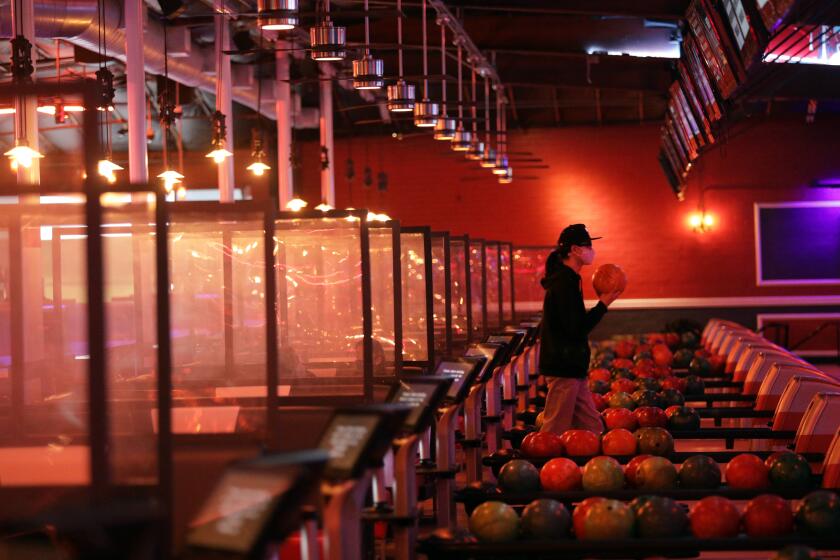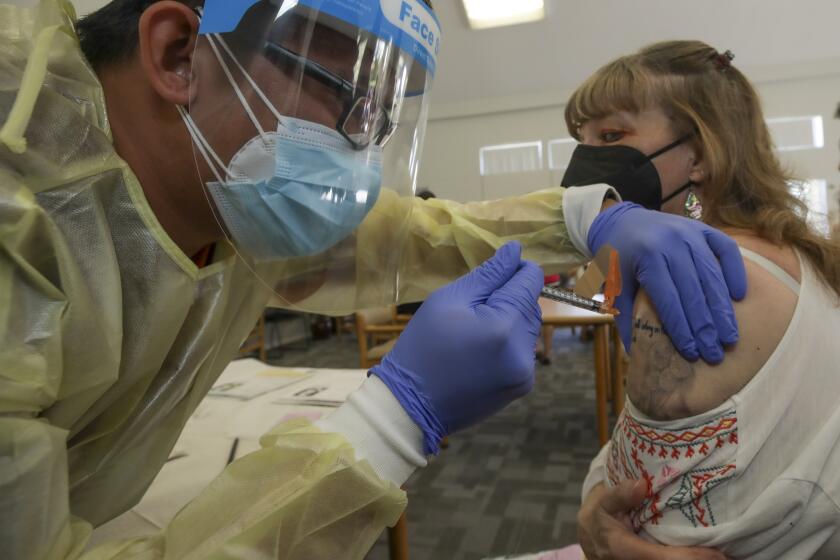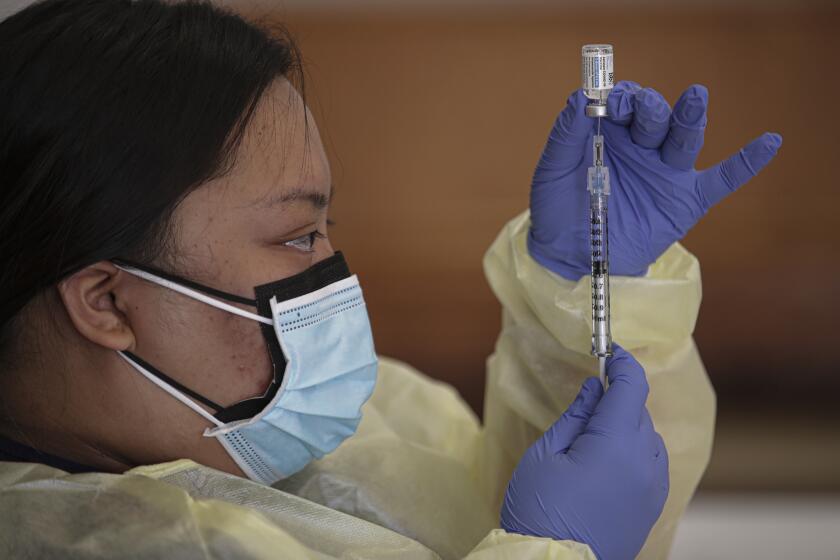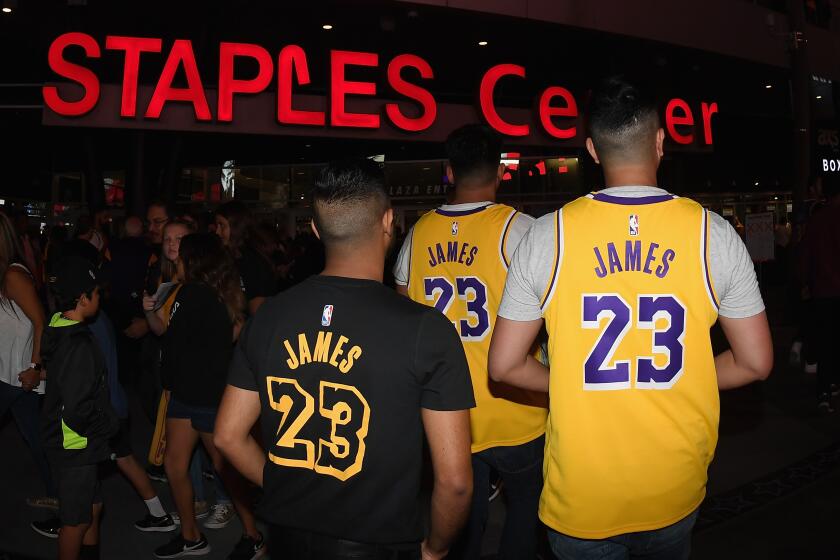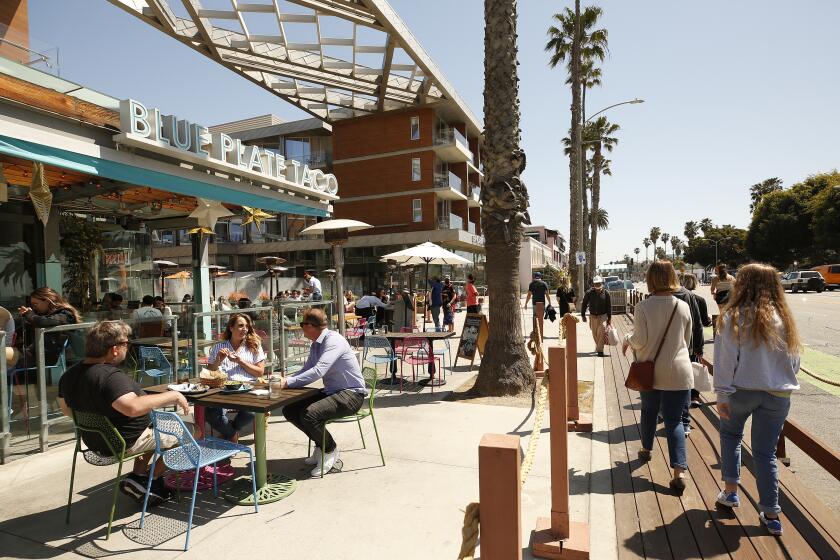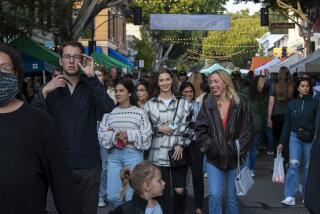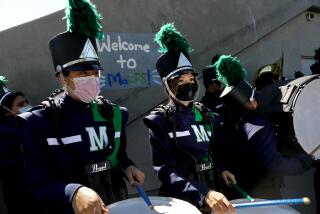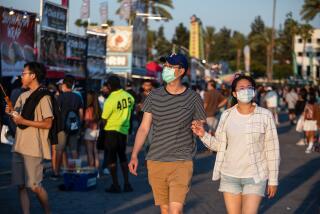Indoor events can return in California later this month as COVID-19 conditions improve
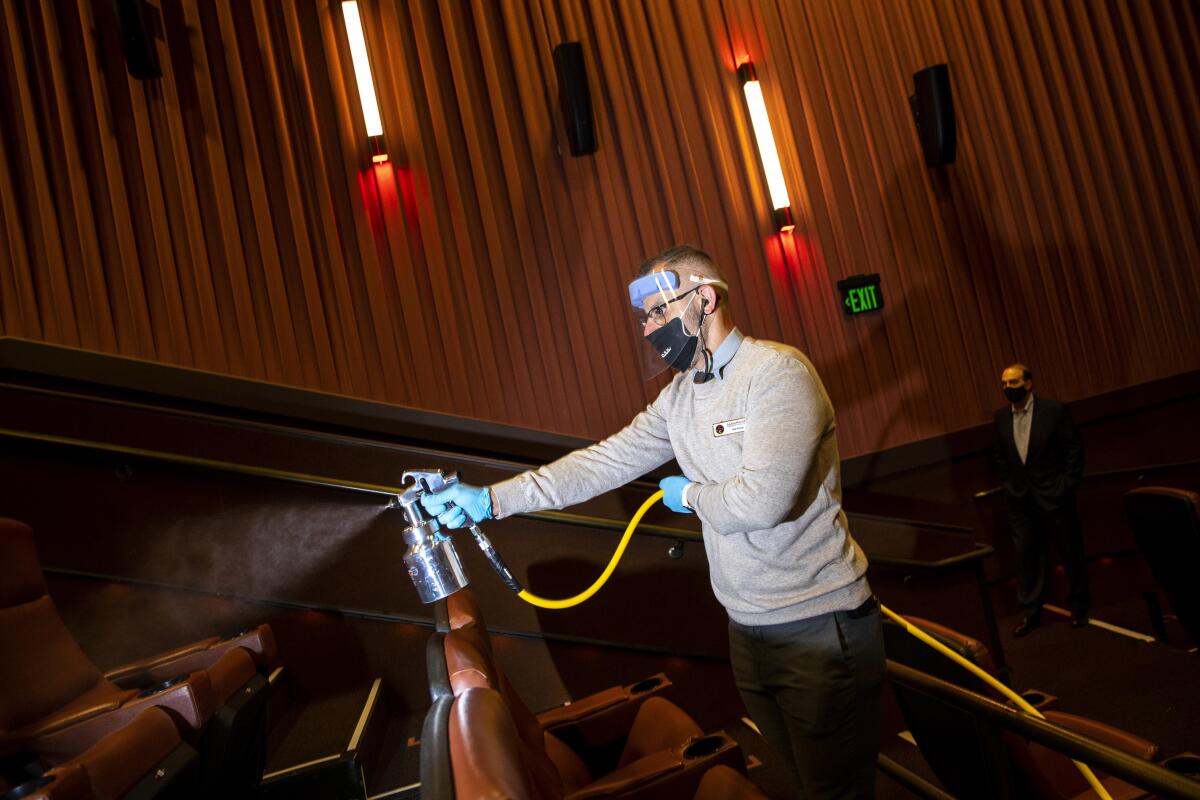
California will allow indoor live events to resume with limitations beginning later this month, meaning an imminent return of things like concerts, sports contests and theatrical performances that have long been off-limits on account of the COVID-19 pandemic.
The changes to the state’s reopening blueprint, which go into effect April 15, reflect two parallel trends, officials say.
First, California is continuing to gain ground in its battle against the coronavirus, with the numbers of newly confirmed cases and related hospitalizations continuing to trend downward.
And second, the state’s vaccine rollout is chugging along, with hundreds of thousands of doses being administered each day.
County officials say moving to a less restrictive category in California’s reopening blueprint is a hard-fought gain in the battle against COVID-19.
“By following public health guidelines such as wearing masks and getting vaccinated when eligible, we can resume additional activities as we take steps to reduce risk,” Dr. Mark Ghaly, California’s health and human services secretary, said in a statement.
Even once the revisions take hold, “California will still be one of the most restrictive states in the country,” Dee Dee Myers, senior advisor to Gov. Gavin Newsom and director of the Governor’s Office of Business and Economic Development, added in a phone call with reporters.
“We’ll continue to move very slowly and cautiously, but moving with some transparency toward more allowable activity,” she said.
Under the new state guidance unveiled Friday, indoor live events and performances would remain a no-go in the purple tier — the most restrictive rung of California’s color-coded reopening road map.
But they could take place starting April 15 in the three other tiers, subject to capacity limits and other requirements, such as that tickets be purchased in advance, that organizers establish designated areas for eating and drinking, and that attendance be limited to California residents.
This level of coverage, though far short of herd immunity, provides some defense against the COVID spikes seen elsewhere in the U.S., officials say.
For venues with a capacity of up to 1,500 people, the new rules will be:
- In the red tier, the state’s second strictest, attendance would be limited to 10% of capacity or 100 people — though that could increase to 25% if all guests are tested for the coronavirus or show proof that they’ve been fully vaccinated.
- In the next step up the ladder, the orange tier, the capacity cap would be 15% or 200 people, and increase to 35% if all guests are tested or fully vaccinated.
- Maximum capacity would rise to 25% or 300 people in the least restrictive yellow tier and could grow to 50% if everyone is tested or completely vaccinated.
The COVID-19 response has become a race of vaccines versus variants and officials are urgently trying to get doses into as many arms as possible.
For larger-capacity venues, testing or proof of vaccination would be required and attendance limited to 20% of capacity in the red tier. The threshold would be 10% or 2,000 people in the orange tier — and could increase to 35% if all attendees are tested or show proof of full vaccination.
The cap is also set at 10% or 2,000 people in the yellow tier, though it could increase to 50% if all guests are tested or fully vaccinated.
Venues can also choose to separate people into sections based on their vaccination status. Those who are fully vaccinated could sit shoulder-to-shoulder, but they still must wear masks, state Public Health Officer Dr. Tomás Aragón said.
Aragón said that at first, people will have to bring their vaccination card with them. But “we anticipate that in the future that the solution will be digital,” meaning people could potentially show proof of vaccination on their cellphones.
Myers said she believes that “allowing some of these activities and opportunities to vaccinated individuals is an incentive — and we want to incentivize people to get the vaccine and to get it as soon as they can so they can return to some of their favorite activities.”
To date, 32% of Californians have received at least one vaccine dose, according to data from the U.S. Centers for Disease Control and Prevention.
However, only about 16.8% of the state’s population has been fully vaccinated.
Local pro teams and arenas prepare for the return of fans at games with the state relaxing restrictions amid declining COVID-19 cases and vaccinations.
State officials also unveiled new guidance Friday pertaining to private events, gatherings and meetings.
Beginning April 15, outdoor gatherings of up to 25 people are allowed in the red tier, with the maximum size increasing to 50 people in the orange tier and 100 people in the yellow tier.
In the purple tier, outdoor gatherings are limited to three households.
Though state officials strongly discourage any indoor gatherings, such events are permitted with modifications in non-purple tiers.
Private events — such as receptions or conferences — are allowed outdoors only in the purple tier, with attendance limited to 25 people. If everyone is either tested or completely vaccinated, attendance can increase to as many as 100 people.
“In all tiers, modifications are required to reduce risk,” according to a statement from the California Department of Public Health. “This includes pre-purchased tickets or a defined guest list and assigned seating.”
Here are the rules for events in the other tiers:
- Red tier: Outdoor gatherings are limited to 50 people, increasing to 200 if all guests are tested or vaccinated. Indoor activities are allowed, with attendance limited to 100, if everyone is tested or shows proof of full vaccination.
- Orange tier: Outdoor gatherings are limited to 100 people. The limit increases to 300, and indoor activities of up to 150 people are allowed, with full testing and vaccination.
- Yellow tier: Outdoor gatherings of up to 200 people can be held, increasing to 400 if all guests are tested or fully vaccinated. Indoor activities would be allowed with attendance limited to 200 if everyone is tested or inoculated.
What does L.A., O.C. reaching the orange tier mean for reopenings?
Friday’s announcement was the latest move by California to loosen COVID-19 restrictions as cases and hospitalizations have plummeted.
More areas of California — including Orange and Los Angeles counties — are seeing their coronavirus metrics improve to the point that they can more widely reopen businesses and other public spaces.
L.A. and Orange counties were cleared this week to progress into the orange tier.
With the move, a whole host of venues, including restaurants, bars, retail stores, museums and houses of worship, can increase their operations. The relaxed rules went into effect in Orange County on Wednesday, as soon as was allowed, but L.A. County officials said they were holding off until Monday.
The Associated Press contributed to this report.
More to Read
Sign up for Essential California
The most important California stories and recommendations in your inbox every morning.
You may occasionally receive promotional content from the Los Angeles Times.
